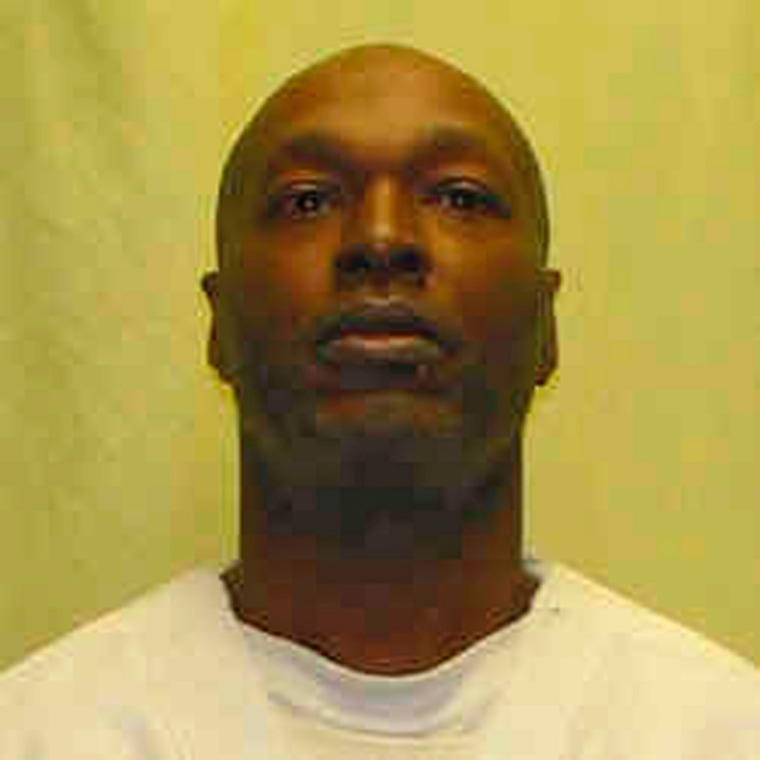Gov. Ted Strickland ordered a weeklong reprieve for a condemned inmate on Tuesday after the Ohio execution team had problems finding usable veins for the lethal injection process.
Executioners were unable for more than two hours to find veins that would accept fluid from an IV without collapsing for 53-year-old Romell Broom, who was sentenced to die for the rape and slaying of a 14-year-old Tryna Middleton in 1984.
No Ohio governor has issued a similar last-minute reprieve since the state resumed executions in 1999.
The team began working on Broom, in a holding cell 17 steps from the execution chamber, at about 2 p.m., four hours after his execution was originally scheduled. That initial delay was due to a final federal appeals request.
After the team spent nearly an hour trying to find a workable vein, Broom tried to help them bring him a quicker death. He turned over on his left side, slid rubber tubing designed to clarify his veins up his left arm, then began moving the arm up and down while flexing and closing and opening his fingers. The execution team was able to access a vein, but it collapsed when technicians tried to insert saline fluid.
Broom then became visibly distressed, turning over on his back and covering his face with both hands. His torso heaved up and down and his feet shook, as he appeared to be crying. He wiped his eyes and was handed a roll of toilet paper, which he used to wipe his brow.
He sat up at the end of the bed and talked with his execution team.
Can't access vein
The team had been asking Broom whether he wanted a break, but he chose to push ahead, as did the execution staff, prisons director Terry Collins said. Collins then insisted on a break and contacted the governor to let him know about the difficulties.
Broom, who did not have any witnesses present, requested that one of his attorneys, Adele Shank, come to the witness area. She asked to speak with Broom but was told that once the process started, it's protocol that attorneys can't have contact with their client.
"I want to know what Romell wants," Shank told a prison official, who told her that he was being cooperative.
"He's always cooperative," responded Shank. "I want to know what he wants me to do."
At about 3:20, the team tried to insert shunts through veins in Broom's legs as he sat upright on the table. He looked up several times during the process and appeared to grimace. A member of the execution team reached over and patted him on the back.
Roughly five minutes later, the team returned to Broom's arms to again try to access a vein and get the saline solution to work.
After speaking with the execution team, Collins said he determined that it was time he ask the governor for a reprieve, at about 4 p.m. The team told him they didn't believe his veins would accept the saline fluid, or hold if the execution reached the point when the lethal drugs would start being administered.
Collins said the difficulty in the process "absolutely, positively" does not shake his faith in the state's lethal injection procedure. He said his team wants to be "100 percent perfect 100 percent of the time" but that no one is.
"I have a team right now that's disappointed because they think they let me down," said Collins, who told the team they did not.
Collins said he thanked Broom after the reprieve was issued for the respectful way he dealt with the execution team and the demeanor he showed through the difficulties.
'Flawed process'
Another lawyer for Broom, Tim Sweeney, wrote Ohio Supreme Court Chief Justice Thomas J. Moyer asking him to end the procedure.
"Any further attempts today to carry out the execution of Mr. Broom would be cruel and unusual punishment in violation of ... the U.S. Constitution," he wrote. "They would also violate Ohio's statutory requirement that a lethal injection execution is to be quick and painless."
"It was obviously a flawed process," said Shank, who said she was concerned that Broom appeared to wince in pain several times.
Collins said the team would try to determine, before Broom's next scheduled execution, how to resolve the problem with finding suitable veins.
A medical evaluation Monday determined that veins in Broom's right arm appeared accessible, while those in his left arm were not as visible.
Delayed executions
The scene Tuesday was reminiscent of the problems that delayed executions in 2006 and 2007 and led to changes in Ohio's lethal injection process.
In 2006, the execution of Joseph Clark was delayed for more than an hour after the team failed to properly attach an IV, an incident that led to changes in Ohio's execution process.
The state also had difficulty finding the veins of inmate Christopher Newton, whose May 2007 execution was delayed nearly two hours.
In that case, the state said the delay was caused by team members taking their time as opposed to an unforeseen problem.
Since Clark, the state's execution rules have allowed team members to take as much time as they need to find the best vein for the IVs that carry the three lethal chemicals.
Ohio has executed 32 men since Wilford Berry in 1999, an execution slightly delayed also because of problems finding a vein.
